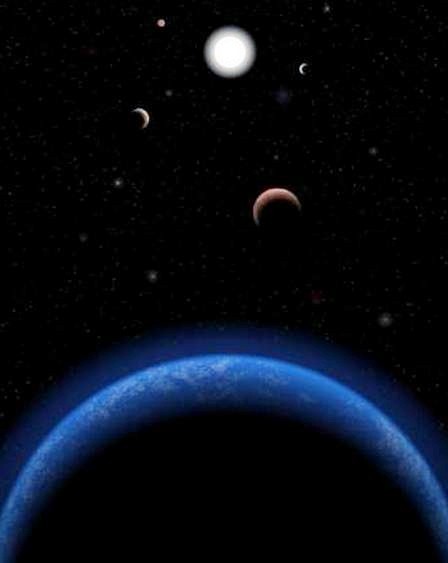Tau Ceti, a star system only 12 light years away, just lost its appeal as the most likely to have habitable exoplanets with alien life forms.
Tau Ceti (τ Ceti) is a star in the constellation Cetus and is the closest solitary G-class star to our solar system. Because of its solar analog or Sun-like characteristics, Tau Ceti is a favorite target in the Search for Extra-Terrestrial Intelligence (SETI).
It was even mentioned in an episode of the TV series, Star Trek. Tau Ceti is visible from Earth and was first sighted in the 17th century.
In 2012, astronomers found five planets orbiting Tau Ceti. Later on, two of these planets -- Tau Ceti e and Tau Ceti f -- were found inside the habitable or Goldilocks Zone where life is more possible because conditions for the existence of liquid water are greater.
This week, however, a new study led by researchers at Arizona State University seems to have shut the door on the long-standing speculation life -- even microbial life -- might exist on any planet in the Tau Ceti system.
The researchers said their data confirms that Tau Ceti e and Tau Ceti f most likely are inside the star's Goldilocks Zone, but despite this, the chances that either support life is almost nil.
"Planet e is in the habitable zone only if we make very generous assumptions. Planet f initially looks more promising, but modeling the evolution of the star makes it seem probable that it has only moved into the habitable zone recently as Tau Ceti has gotten more luminous over the course of its life", said study lead author Michael Pagano.
Researchers believe Tau Ceti f has probably been in the habitable zone for less than one billion years. If we use the evolution of Earth's biosphere as a model, this planet has at least another billion years before the smallest traces of microbial life might be detectable.
The new analysis found Tau Ceti's chemistry quite different from that of our Sun. Tau Ceti the star contains a larger amount of magnesium relative to silicon.
A high magnesium to silicon ratio means a rocky planet could have mantles predominantly made of ferropericlase, a magnesium and iron-rich mineral that's ultra-dense and resistant to flow.
Large amounts of this mineral could slow down plate tectonic activity and volcanism, two processes critical to the evolution of life on Earth and probably on other planets, as well.



























